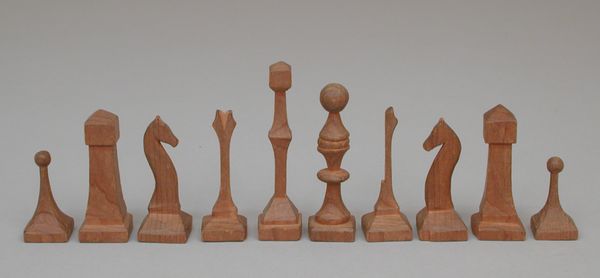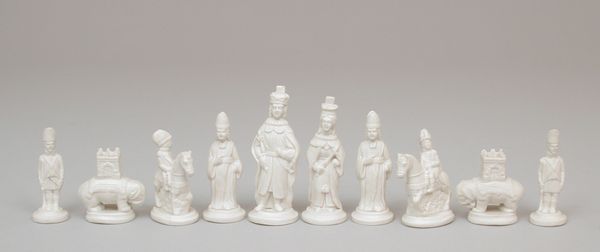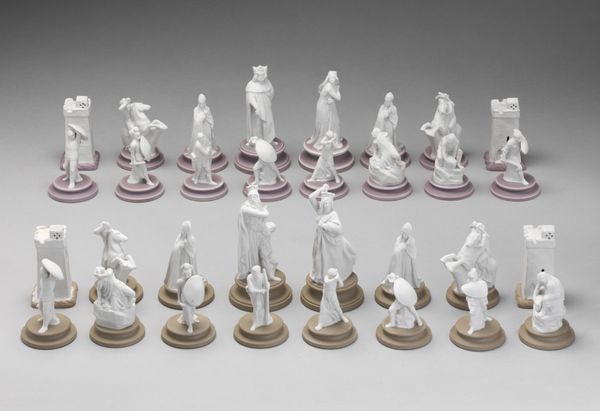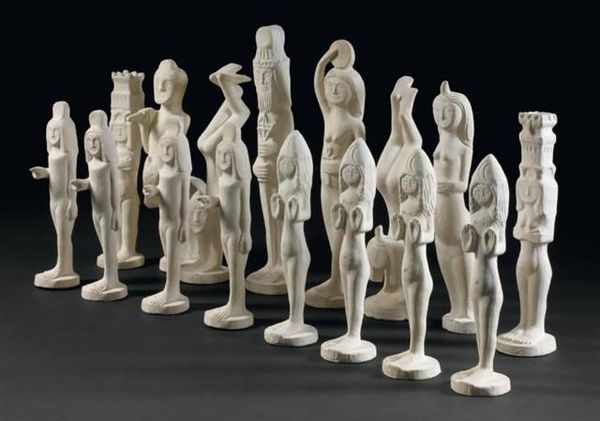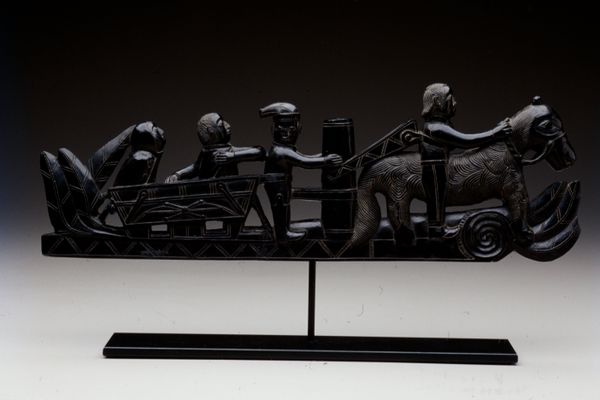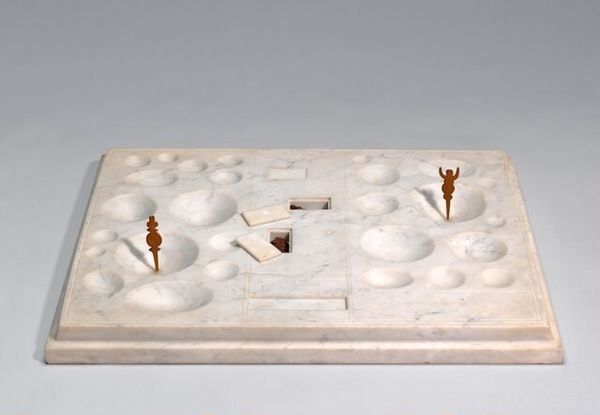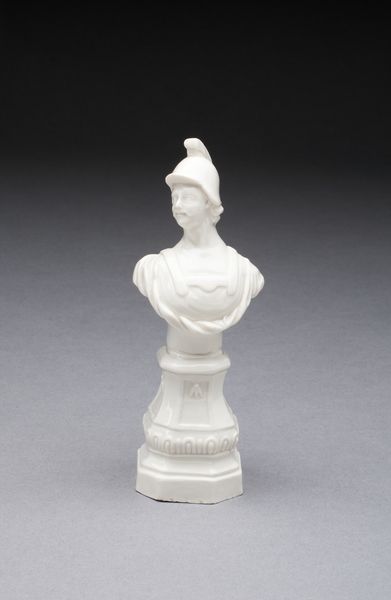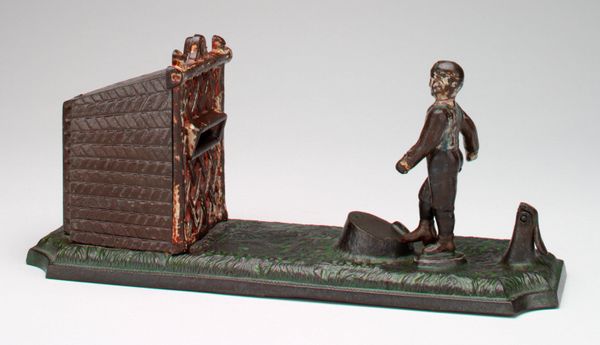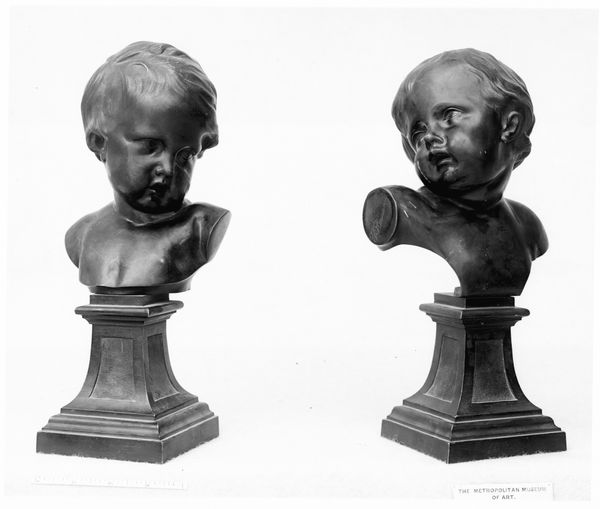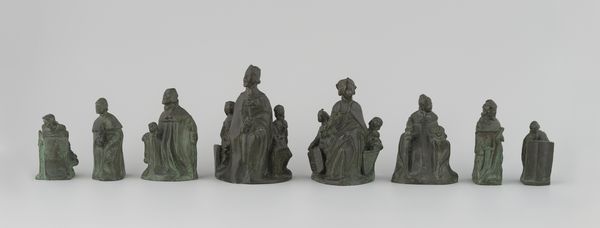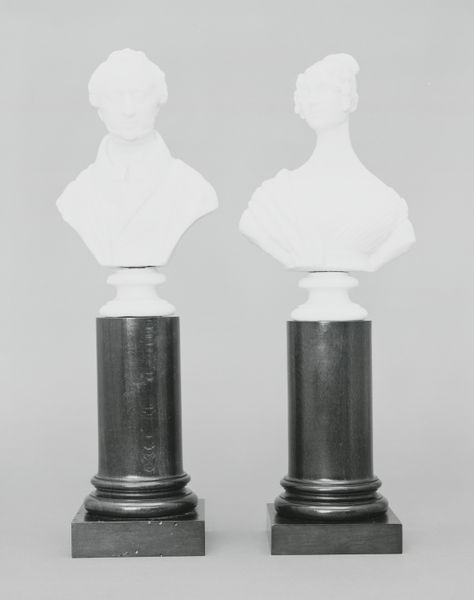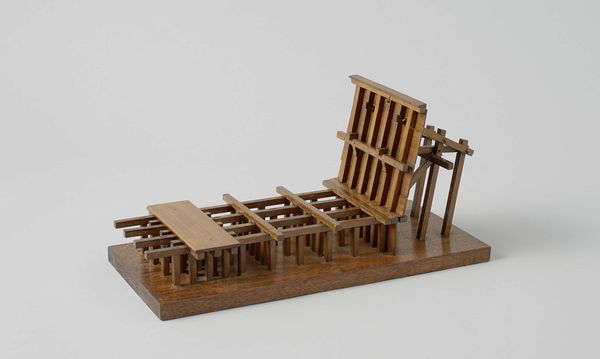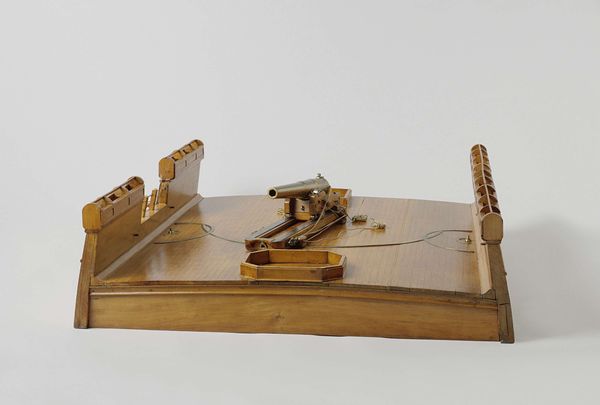
ceramic, sculpture, ivory
#
portrait
#
ceramic
#
stoneware
#
sculpture
#
ceramic
#
decorative-art
#
ivory
#
miniature
Dimensions: Height (tallest red, confirmed): 4 1/16 in. (10.3 cm); Height (red pawn, confirmed): 2 in. (5.2 cm); Height (tallest white, confirmed): 4 in. (10.2 cm); Height (white pawn, confirmed): 2 1/16 in. (5.2 cm); Overall (original box, confirmed): 5 3/4 × 21 7/8 × 15 5/8 in. (14.6 × 55.6 × 39.7 cm) Overall (board): 3/4 × 21 3/8 × 14 3/4 in. (1.9 × 54.3 × 37.5 cm)
Copyright: Public Domain
Curator: The ivory and stoneware chessmen presented here with their box, are dated from 1850 to 1860, and currently reside at the Metropolitan Museum of Art. Editor: There's a formality, a certain austere beauty in the monochrome ivory, juxtaposed with the dark wooden board. I wonder about the cultural context, the specific power dynamics they mirror? Curator: Consider the iconic chess pieces rendered here, not merely as game pieces but as miniature sculpted portraits and architectural symbols, each imbued with codified meanings. Look at the tower, for instance: it’s more than just a rook, but a representation of societal strength and defence. The horse echoes nobility. Editor: And the figures, are they representations of actual people? Are they romanticized figures of power, perhaps reflective of a rising nationalism in mid-19th century Europe? Or maybe even commentaries on colonialism as a "game" played across nations? Curator: Possibly, but notice the way each figure carries a certain recognizable element: dress codes, gendered markings. These cues echo a deeper human truth beyond simple representation— the social constructs of power itself, and gender archetypes. The artist uses familiar forms to suggest historical depth and perhaps even satire. Editor: The limited colour palette also seems significant. Is it about simplicity, an aristocratic understatement? Or does it serve to strip away distractions, highlighting the bare bones of strategic conflict and hierarchical relations, reflecting class divisions, social mobility within very tight limits, a societal battlefield, so to speak. Curator: It makes you think about how art, even the art of games, isn't just an aesthetic experience, but a repository for coded values, reinforcing social ideas about power and class. Editor: I keep seeing parallels between this game and broader societal games being played out—gender dynamics, colonial enterprises—these miniatures speak volumes about larger themes of power, strategy, and perhaps a degree of cynical manipulation of the general population. They definitely provide us with an excellent jumping-off point.
Comments
No comments
Be the first to comment and join the conversation on the ultimate creative platform.
